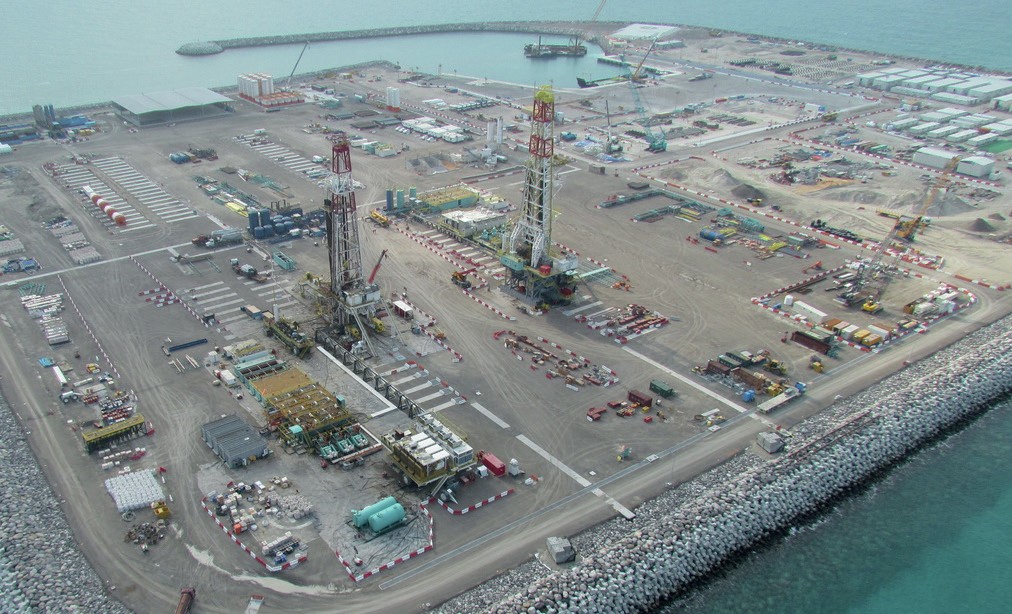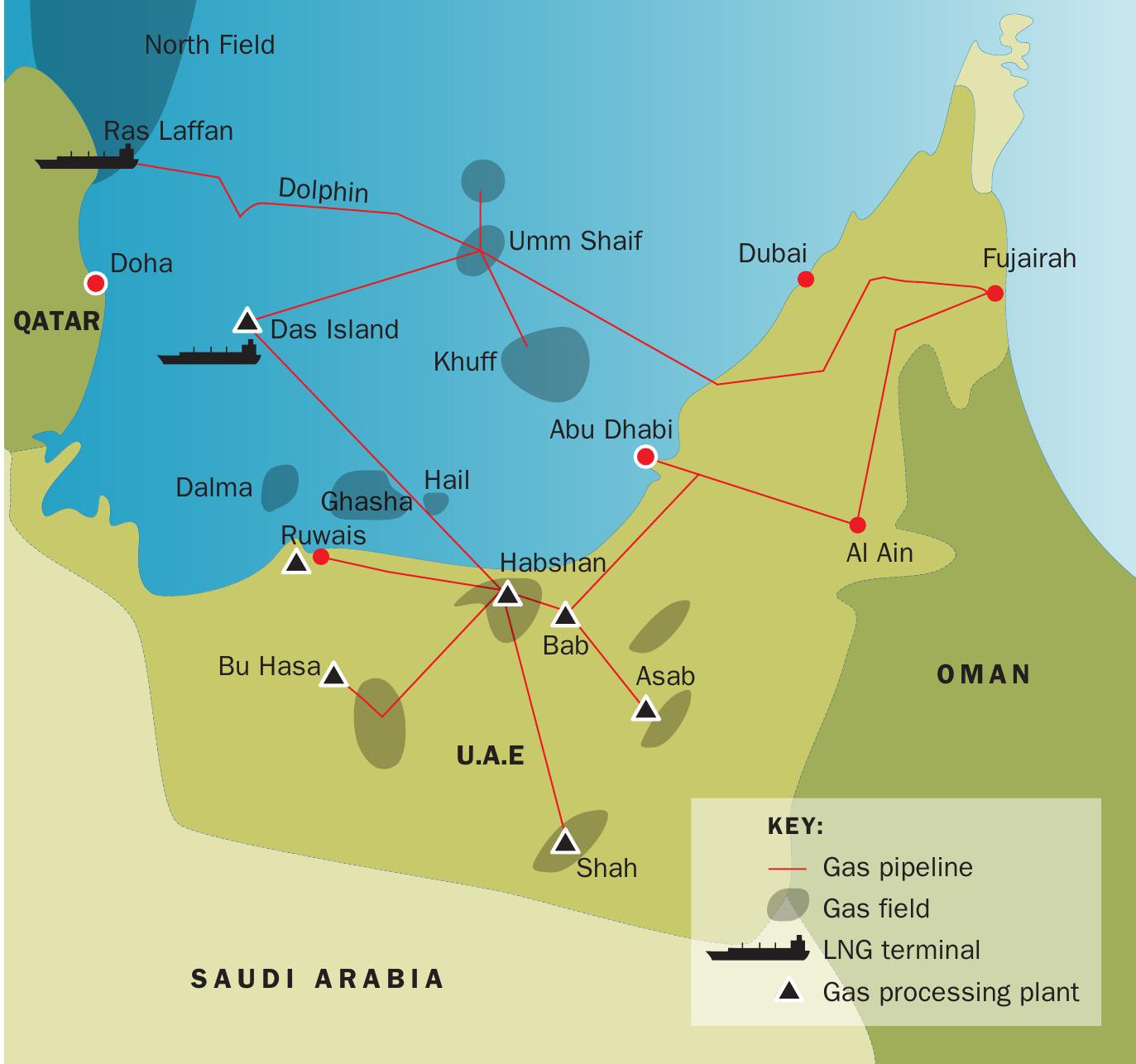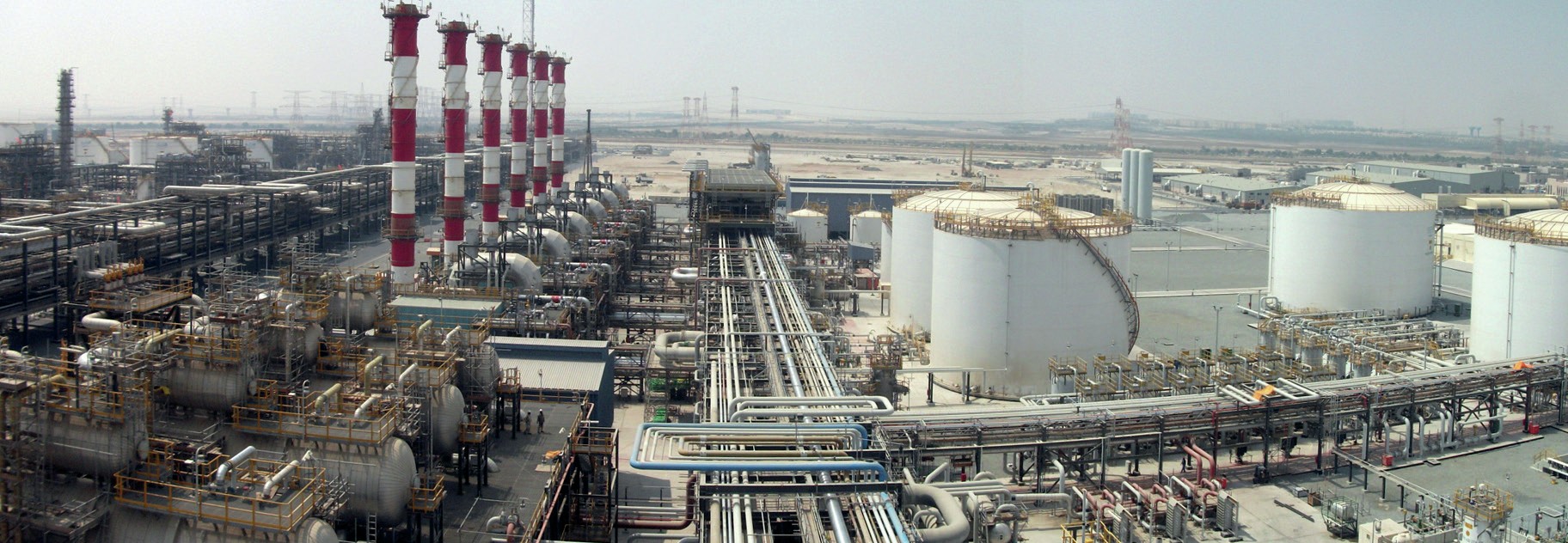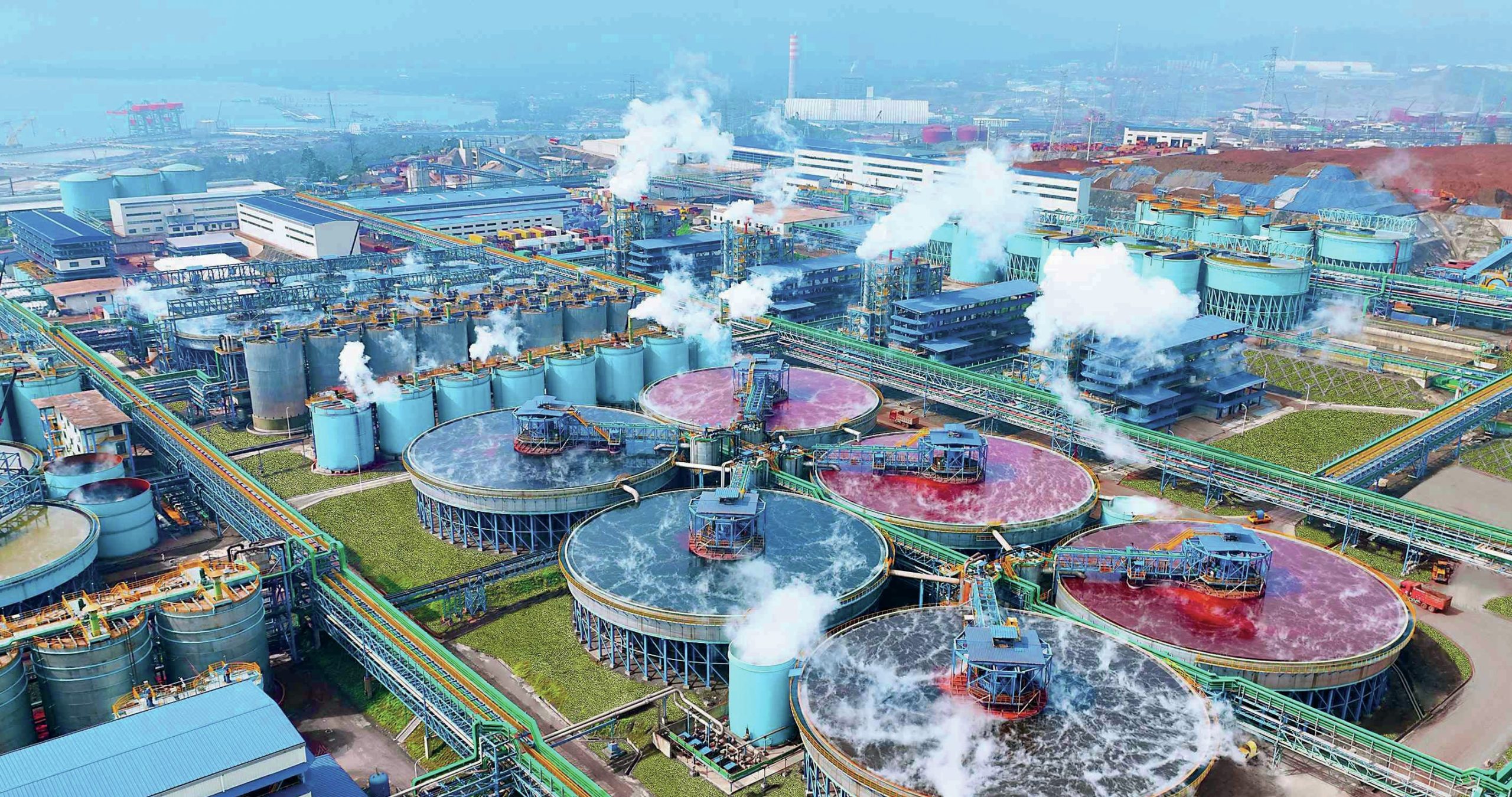Sulphur 411 Mar-Apr 2024

31 March 2024
Abu Dhabi’s sour gas expansions
ABU DHABI
Abu Dhabi’s sour gas expansions
Already the world’s largest exporter of sulphur, Abu Dhabi continues to expand its sour gas production and sulphur output.

Abu Dhabi is the capital of the Untied Arab Emirates and its second largest city. In contrast to the Emirates’ commercial and tourism hub Dubai, Abu Dhabi’s growth has been solidly predicated on oil and gas reserves in the deserts to the southwest and the shallow seas northwest of the city. The Emirate of Abu Dhabi has most of the territory of the UAE, encompassing around 75% of its area. The city has grown rapidly over the past few decades, from just 300,000 in 1990, and approximately doubled in population from 900,000 to 1.6 million people from 2010 to the present. Another 1.1 million people live in the other cities and towns and villages of the Emirate. The total population of the UAE rose to 9.4 million people in 2021, with around 90% of these being expatriate workers from elsewhere in the world.
This rapid growth of both Abu Dhabi and the rest of the UAE has put considerable pressure on power demand. In Abu Dhabi this has increased sixfold from 2000 to 2020, with a peak load rising from 3.3 GW at the turn of the millennium to 18.3 GW in 2020, and this is projected to rise by another 50% by 2030 to 26.3 GW, with increasing use for consumer electronics, and because air conditioning is needed year round to cope with the extremely high temperatures of the region. The UAE has consequently become the third largest generator of electricity in the region, after Saudi Arabia and Iran. In order to meet this demand, the UAE has relied predominantly upon natural gas-based power generation. While there is some nuclear power and increasing solar power generation, these collectively accounted for only 10% of the UAE’s electricity output in 2021, and 86% came from natural gas.
Although 7 bcm of gas are exported every year as liquefied natural gas from the long standing Das Island LNG terminal, the UAE has become a large net gas importer to feed this electricity generation. In 2022, UAE gas production was 58 bcm, while consumption was 70 bcm. This meant that in 2022 the UAE imported 19 bcm of gas. Around 0.9 bcm arrived as LNG shipments, but the remainder came from the Dolphin pipeline, which runs from Qatar east to the UAE.
Gas reserves
The UAE is assessed to have the seventh largest reserves of natural gas in the world, at 7.0 trillion cubic metres. However, some of these are associated with oil production, which makes their output dependant upon OPEC quotas, while much of the reserves are in fact highly sour and often in remote desert locations. As a result, while many of these fields were discovered in the 1960s, production was deemed too expensive and difficult, and large scale exploitation of these reserves did not begin in earnest until the 2000s when the UAE’s need for gas began to grow ever more pressing. Figure 1 shows the location of these reserves.
Oil and gas production in Abu Dhabi is organised by the state owned Abu Dhabi National Oil Company (ADNOC). However, actual production is often handled via a number of joint ventures with foreign partners. Chief among these for oil production is ADNOC Onshore, formerly the Abu Dhabi Company for Onshore Oil Operations (ADCO), which is 60% owned by ADNOC and the remainder by Total (10%), BP (10%), CNPC (8%), Inpex (5%), ZhenHua Oil (4%), and GS Energy (3%). ADNOC Onshore produces around 50% of the UAE’s oil, from 11 oil and gas fields across four main areas: Bab, North East Bab (NEB), Bu Hasa, and South East (SE). They also operate two export terminals in Jebel Dhanna and Fujairah, as well as a large pipeline network.
Offshore oil exploitation is in the hands of ADNOC Offshore (a merger of the Abu Buchehr Dhabi Marine Are Operating Company and the Zakum Development Company or Zadco). Again ADNOC holds 60% of the shareholding, with the rest co-owned with Exxon/Inpex (for Upper Zakum), Inpex (for Umm Al Dalk and Satah), Total, Eni, ONGC and Inpex for Lower Zakum, Total and Eni for Umm Shaif and Nasr, and CEPSA and OMV for Sarb and Umm Lulu.
Natural gas assets are mainly in the hands of ADNOC Gas Processing (formerly known as Gasco). ADNOC Gas Processing is 68% owned by ADNOC, with the remainder in the hands of Shell (15%), Total (15%) and Partex (2%).

Finally, the non-associated sour gas fields are being developed by ADNOC Sour Gas (formerly Al Hosn Gas), which is a 60-40 joint venture between ADNOC and Occidental Petroleum.
Sour gas projects
To date, the largest sour gas field development has been at Shah, about 210km southwest of the city of Abu Dhabi. Project development dates back to 2007, with ConocoPhillips originally involved as project partner, replaced by Occidental when the former dropped out of the project in 2010 as part of a retrenchment following the financial crash or 2008-09. It is now operated by the ADNOC Sour Gas joint venture.
The project presented considerable technical challenges for the companies involved. The gas lies up to 5km down, with, as noted, 23% hydrogen sulphide and 10% carbon dioxide content. At that depth the temperature is 150C and the pressure as high as 5,500psi. The remoteness of the site also meant that work had to begin from scratch; building roads to allow access for a site population of 35,000 during the construction phase, who must operate 210km from the nearest city in temperatures of 50C.
The initial development was designed to process 1.0 bcf/d of sour gas. Sulphur output was around 3 million t/a. Original plans for a heated sulphur pipeline to carry the sulphur to the coast at Ruwais were eventually replaced by a granulation plant 15 km from the sour gas wells (to provide safety in case of a sour gas blowout) and a rail link to the export terminal at Ruwais. First gas production began in January 2015. An expansion project, conducted by Saipem, was begun in 2021 and completed in September 2023 which has taken processing capacity to 1.45 bcf/d of gas and lifted sulphur output to 4.2 million t/a sulphur at capacity.
Habshan
Habshan is an oil field to the southwest of Abu Dhabi city, which has been producing since 1983. It is also a hub for processing associated gas from nearby oil and gas fields, including a link from the Das Island LNG plant completed in 2013 as part of the Integrated Gas Development. Habshan also shares some facilities with the nearby Bab oil field, where there is a natural gas liquids extraction train which also separates acid gas out from the gas flow and passes it to Habshan for treatment.
The Habshan gas complex, operated by ADNOC Gas Processing, comprises 14 processing trains in five plants and has a total processing capacity of 6.1 bcf/d of gas. It includes the huge Habshan 5 complex, which was completed in 2013 by Tecnimont, and the associated Habshan Sulphur Plant which handles all of the sulphur from the Habshan complex, including liquid sulphur feeds from Habshan phases 1-4, and which can produce 3.6 million t/a of granulated sulphur. In late September 2023, ADNOC awarded a $615 million EPC contract to Petrofac for a carbon capture, utilisation and storage project at Habshan as part of its strategic initiative to reach net zero carbon emissions overall by 2045.
Expansion projects
As well as these existing sour oil and gas projects, there are several large expansion projects under way. Foremost among these is the Hail/Ghasha development in the Ghasha concession, offshore northwest of the city of Abu Dhabi (see Figure 1), which includes the Hail, Ghasha, Hair Dalma, Bu Haseer, Satah, Nasr, SARB, Shuweihat, and Mubarraz offshore fields. The concession is majority (55%) owned by ADNOC, with other stakes being held by Eni (25%), Wintershall (10%), OMV and Lukoil (5% each).
The Hail and Ghasha development project will use artificial islands and drill the Hail and Gahsah fields, and act as a hub for exploitation of the other fields. In October 2023 ADNOC approved a final investment decision for the project, which aims to produce 1.5 bcf/d of natural gas, with a completion date set for the end of 2029. An $8.2 billion EPC contract was awarded to NPC and Eni for the artificial islands and processing plant, pipelines and drilling centres. Another, $8.7 billion EPC contract went to Tecnimont for the project’s onshore scope, two gas processing units, three sulphur recovery sections, associated utilities and offsites, as well as export pipelines. Tecnimont says that its scope will the development of digital solutions aimed at reducing emissions and optimising energy consumption at the project’s onshore installations.

ADNOC says that this project will operate on a zero carbon basis, capturing 1.5 million t/a of carbon dioxide and using electricity from renewable and nuclear sources. The project will also produce low-carbon hydrogen to replace fuel gas used in operations. The gas in the Ghasha concession varies in H2 S capacity, but averages around 14-15% H2 S, slightly sweeter than at Shah. Nevertheless, sulphur output at Hail/Ghasha could reach 3.5 million t/a at capacity towards the end of the decade.
Shah expansion
A third expansion of the Shah project is also under development. This will take total processing capacity at the site to 1.85 bcf/d, with sales gas output rising from 740 million cfd to 940 million cfd. This will also life sulphur production by 1.1 million t/a. Tenders for the front end engineering and design of the project are anticipated soon.
Bab
There is also a sour gas development planned at the Bab field, approximately 150km southwest of Abu Dhabi city, just east of Habshan. The project was originally planned to be on a similar scale to the Shah project, with a throughput of up to 1 bcf/d of sour gas, but recent assessments have lifted this to 1.9 bcf/d. However, the gas at Bab is even sourer than at Shah, with an average H2 S content of 33%. This is one of the reasons that the project has been delayed for several years, and it is also why the project as currently envisaged will involve reinjection of acid gas into the wells and little or no sulphur recovery. The project is reportedly still in the pre-FEED stage, with no firm timescale.
Associated gas
In addition to gas expansions, ADNOC is working to increase its oil production capacity to 5 million bbl/d by 2027, although this may require some renegotiation of its OPEC quota, which currently stands at just over 3.2 million bbl/d, against existing capacity of around 4.6 million bbl/d. CNPC has been recently awarded the EPC contract for expansion of capacity at the Bab oil field by 91,000 bbl/d and another expansion at Bu Hasa which will lift capacity by 100,000 bbl/d.
The expansion will produce additional volumes of associated gas from fields including ADNOC Onshore and Lower Zakum, possibly leading to an additional 1 bcf/f of associated gas being processed. A FEED contract was recently awarded for the expansion of existing facilities to handle the increase, which will also produce additional sulphur volumes.
Refining
In addition to its oil and gas extraction, ADNOC also operates ADNOC Refining (Takreer). Since 2019 this has operated as a joint venture with Eni and OMV. There are three refineries, the oldest at Umm Al Nar, which opened in 1976, and which has 150,000 bbl/d of capacity, and two at Ruwais, one with a capacity of 400,000 bbl/d (Ruwais Refinery East, which came on-stream in 1982) and one with a capacity of 417,000 bbl/d (Ruwais Refinery West, which began operation in 2014). However, ADNOC Refining has recently awarded a front-end engineering and designing (FEED) contract to a joint venture of Tecnicas Reunidas and Abu Dhabi’s National Petroleum Construction Co (NPCC) for the Ruwais Refinery 3 project, which will recover hydrogen, ethane-rich gas, and sales grade propane, butane and pentane from off-gases discharged by units at the Ruwais refinery.
Sulphur output
Currently Abu Dhabi’s sulphur production comes mainly from the Habshan and Shah gas processing plants. There is a total of 7.8 million t/a of sulphur capacity between the two sites. Another 400,000 t/a comes from the Das Island plant, with the Ruwais refinery generating another 200,000 t/a. A railway was constructed to bring granulated sulphur from Shah and Habshan to the port terminal at Ruwais, which has a capacity of 9 million t/a of sulphur. The new sour and associated gas projects are likely to add more than 5 million t/a of sulphur production capacity over the next five years, and sulphur production from Abu Dhabi is projected to rise to 11.5 million t/a by 2028, representing most of new incremental sulphur capacity in the Middle East and a substantial slice of new sulphur capacity worldwide over that period.




